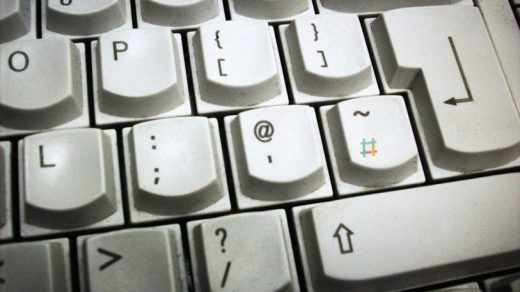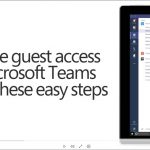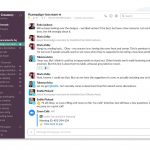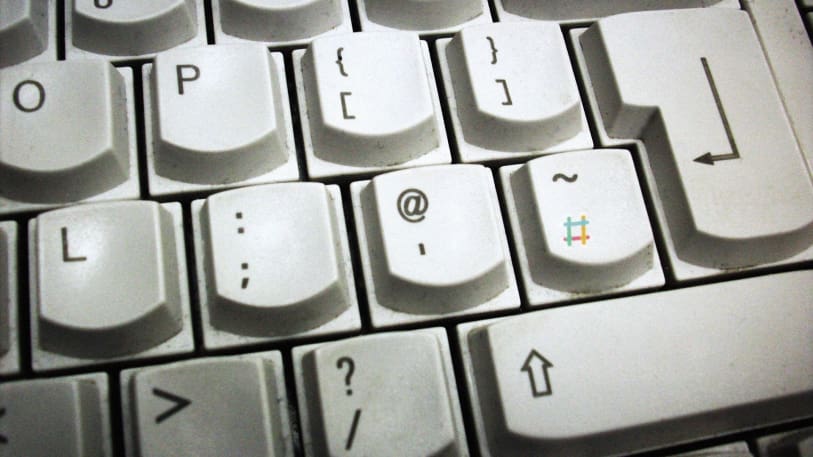Here’s When You Should Use Email Instead Of Slack
Here is the situation: You’re in your office and want to ask a superior a critical question. The query is both important and contains some privileged information. How do you contact this colleague?
You could:
- A) Email them
- B) Talk to them face-to-face
- C) Use Slack
The answer depends on context, and it can sometimes be hard to decipher.
Slack has now become one of the more common ways for coworkers to communicate. It’s both helpful for workflow, as well as social chat (many workplaces have slack rooms like “cat lovers” that have become niche versions of watercooler small talk). This shift from email to more chat-like functionality happened pretty quickly, and leaves a lot of room for gray area for what is and isn’t appropriate.
First and foremost, no matter which mode of communication you’re taking, remember it’s still happening at work. “Be careful of your wording,” says Barbara Pachter, a coach on business communications and interactions and author of The Communication Clinic. Even in what feels like the most secure of digital situations, you should be judicious with how you phrase things. This is one of the biggest problems people face when encountering workplace communication problems, she says.
When Is Best For Slack?
Quick questions. Slack is best used for quick questions that need a fast answer. The reason it works so well, especially in the face of email, is that it’s in front of everyone’s faces, and all the people in an organization are on it.
Group brainstorms. Slack helps eliminate inbox clutter. If you’re working on a brainstorm, the chatroom environment is perfect for spitballing ideas. Conversely, when working with a large group of people, there is nothing worse than a reply-all avalanche. “People hate getting emails that they don’t want to receive,” says Pachter. “It clutters up everybody’s inbox.”
Related: Everything You Are Afraid To Ask About Slack Etiquette
When Should You Email?
Long messages. There are a few instances when it’s best to avoid Slack. For one, email is a bit more formal than Slack, so it may be helpful when beginning to foster a business relationship. Additionally, if you’re looking to talk about things more at length, email may be best.
When you want more privacy. Ultimately, email is best when trying to maintain the most privacy. Though information feels like it is protected when using chatlike interfaces, that may not be the case. For one, administrators likely have access to whatever people are sending on a platform. Not only that, but the information you share on a chat platform has the chance of being subpoenaed by the authorities if such action is warranted. While email can be subpoenaed too, by using a product like Slack, you forfeit control over your data in those circumstances.
When Either Could Work
For one-to-one conversations, it could seem like a toss-up about which is best. For Pachter, the answer lies in the context. If you’re working with a colleague who seems inclined to Slack, it’s best to stay that way to avoid changing channels and getting lines crossed. Similarly, if someone initiates communication via email, it doesn’t make sense to go to Slack when the current system is working just fine.
Equally important is realizing that what you say carries weight. Read what you say to make sure it’s being sent on the right medium and in the right tone. Pachter recommends that people say out loud what they’re writing as well as put the address of the person they’re sending the information to last. This way, you make sure you’ve proofed everything before unintentionally hitting send.
When Neither Slack Nor Email Is Best
Pachter also recommends something that may seem archaic to some: talk. “Sometimes just call the person and be done with it,” she says. A simple conversation can eliminate onerous interactions. Not only that, but conversations can’t be subpoenaed by authorities. Perhaps most important: You can interpret people’s tones and body language when face-to-face. A mere “Thanks.” in a chat window is jarring. Does the person actually mean thanks? Does the period at the end mean they’re unhappy? That could all be cleared up if a voice were heard and expressions seen. A two-sentence, in-person interaction will likely be more effective than a few curt digital exchanges.
In the end, as Pachter explained, it’s all about the context of the situation and what you need to say. Though systems like Slack seem easy, they require just as much finesse as any normal interaction. And it’s important to remember that when deciding the best way to communicate.
Fast Company , Read Full Story
(60)














